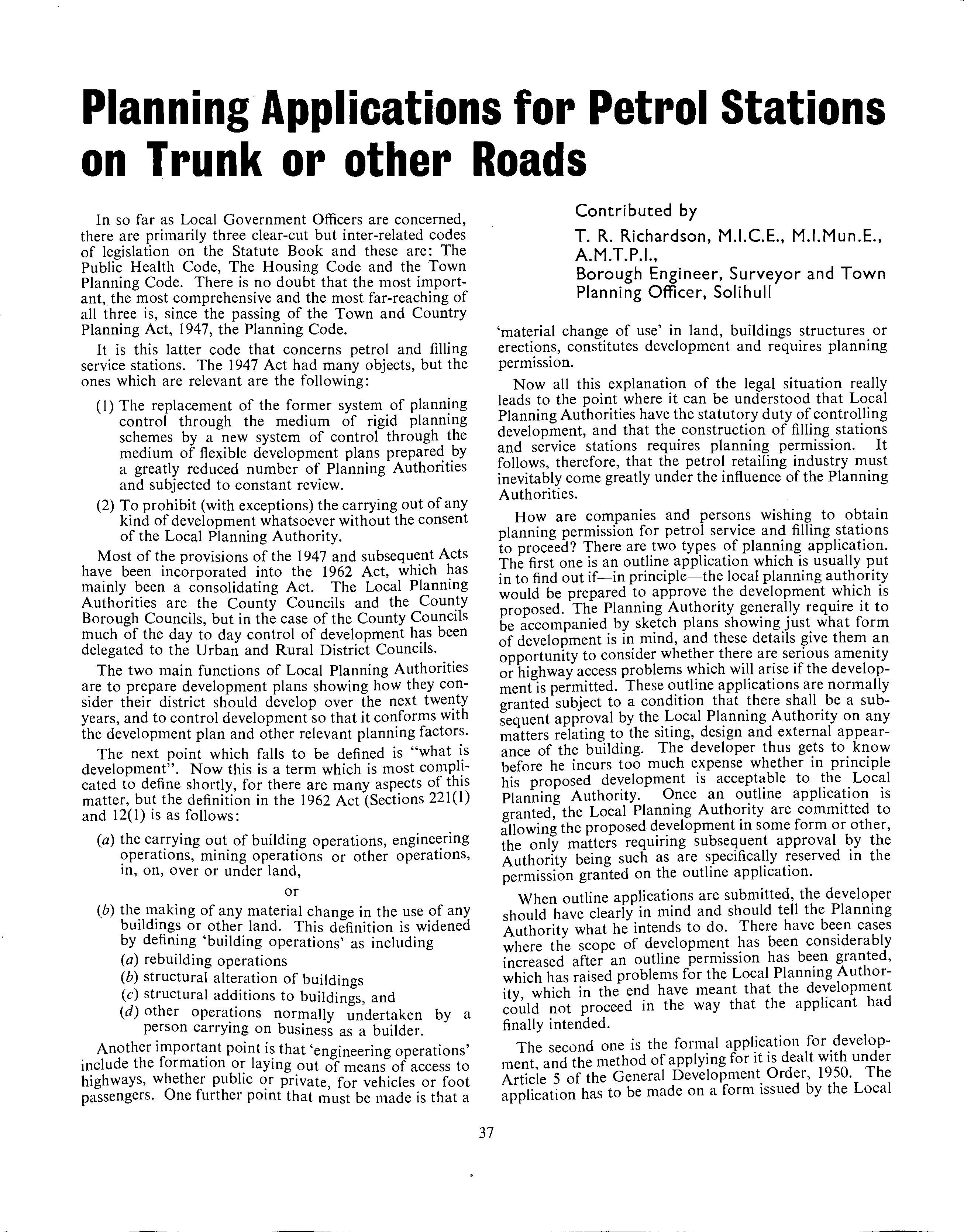
2 minute read
THROUGH THE PIPELINE
from The Bulletin – April 1966
by apeauk
Through
the by Otto Pipeline
Advertisement
WHAT DOES THAT PETROLEUM INTERCEPTOR DO ?
The standard petroleum interceptor comprises three liquid retaining chambers connected to each other by "water seal" pipes and is interposed between gullies liable to receive spilled petrol and the public sewers. A drawing of a typical interceptor is shown below.
Petrol is lighter than water and floats on the top of it. As the seal pipes in the interceptor are carried down inflow will displace from a chamber the heavier water gathered at the bottom whereas petrol will be retained at the top. Because petrol and water rapidly find. their respective levels, the interceptor works most efficiently as a petrol/water separator. However, as our commercial friends are wont to say, there is a bonus !
Accepting as a reasonable approximation that the specific gravity of petrol is 0. 725, it follows that to displace a 1 foot head of water requires a head of petrol in excess of 1 -;- 0. 725 feet or approximately I foot 4! inches. To overcome the water head in the 2 foot long seal pipe of the first chamber petrol must rise up in the chamber to a ~eight. of 2 feet 9 inc~es above the bottom of the seal pipe, 1.e. 9 mches above mvert level. At that time, since the chamber has a cross sectional area of 9 square feet, 155 gallons of petrol would be retained in the first chamber. Before the 2 foot 6 inch water seal on the third chamber is broken petrol would have to rise up to a height of I Ii inches above invert level in every chamber and that would require about 580 gallons of petrol.
There are, however, no free gifts with the bonus and it is regrettable but true that the moment the water seal on the third chamber is broken there is an immediate outflow of approximately 160_gallons as the level of petrol in all chambers returns to mvert level. The purist might say that invert level of the interceptor should never be more than 11 inches below the level of the ground at the lowest
1
A
No T E.-T he ventilating pipes from the chambers should be taken above ground level before being connected together.
All pipes through which liquid p~sscs should be of iron, and all brickwork should be rendered with cement mortar.
LONGITUDINAL SEQ,TION
SEaTIONAL f'LAN A:B.
47










